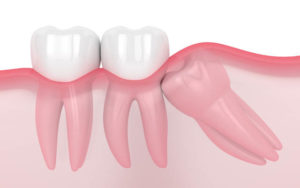What are the disadvantages of composite filling material?
1) Shrinkage, sensitivity, and recurrent decay
Explanation:
Composite filling material in its natural state is pliable and soft. This is an essential characteristic of the material as we need to place and condense it into the cavity preparation after the decay is removed.
Once the soft composite is densely packed, we shine an ultraviolet (UV) light onto it, which causes it to harden. This hardening of the filling material is called ‘curing.’
With the older generation of composites, the curing process caused undesirable effects with the composite filling material. It caused ‘shrinkage’ to occur. Shrinkage is the pulling away of the filling material from the walls of the cavity preparation…It is important to note that we need the filling material to be tightly packed against the cavity preparation walls. Shrinkage causes gaps or openings between the interface of the filling material and the tooth structure. These gaps result in what’s known as microleakage. We discussed microleakage in a previous blog, “Microleakage – What is it?” posted on April 8th, 2013.
Gaps between the filling material and tooth structure can result in plaque, food particles and saliva leaching into the tooth. This can cause re-decays in addition to the likelihood of developing tooth sensitivity i.e. to cold and sweets…so gaps are unacceptable in dentistry at the tooth-filling interface…there must be a tight seal.
Important:
As mentioned previously, composite shrinkage and the accompanying re-decay and sensitivity were more of a problem with the older generation of composites than the ones of today. To get technical, the newer materials are made up of Silorane resin as compared to the older Methyl methylmethacrylates.
2) Composite material is not as durable as amalgam
It may not handle the pressure of biting and chewing or silver fillings, especially if it’s a large filling. However, even large fillings made of amalgam are not as strong as natural tooth structures. This is why we suggest dental crowns (caps) for teeth with extensive restorations.
Because a sizeable white filling may not be able to withstand too much stress, it may be prone to chipping or fracturing.
3) Placing a white filling is very technique-sensitive
There must be a dry field to have the material adhere to and remain in the cavity preparation. If moisture, such as saliva or blood, is present, the filling will not likely stay in the tooth. As a result, we use suction and cotton rolls in a patient’s mouth…to maintain a dry field.
Moisture control is also an issue with silver fillings, but not to the same extent as with white fillings.
4) Placing a white filling is more time-consuming than placing an amalgam
With a white filling, several steps must be taken to ensure success… in addition to maintaining a dry field (#3 above). This may be difficult, especially with an anxious patient who can’t sit in the dental chair for extended periods. It is also difficult for those who can’t open their mouths for too long. Proper scheduling of appointments is critical!
5) Some insurance companies don’t cover white fillings on back (molar) teeth
The most likely reason is that the insurance company doesn’t feel that a back tooth needs to have a white filling and be aesthetically pleasing. They look at it more as an issue of function, not aesthetics. Insurance companies usually cover white fillings on the front (anterior) and side (premolar) teeth. White fillings are more costly than silver fillings.
6) The shade of a white filling may darken over time
Chances of this are increased if one is a coffee, tea or wine drinker. The best strategy is to keep the white fillings as clean as possible…one may also benefit from drinking a beverage through a straw to avoid contact with the filling material. In any case, if a white filling does discolour over time, it can easily be replaced.
7) White fillings tend to wear more readily than silver fillings
…especially when they are large fillings as compared to smaller ones…White fillings tend to hold up better if they are smaller than large.
These are the main disadvantages of white filling material.
Not sure which cavity filler is best for you or a family member? Speak to a dentist in Brampton by calling (905) 791-3867 or book online. You’ll be glad you did!
Yours in excellent oral hygiene and overall health,
Dr. F. Keshavarz Dentistry







